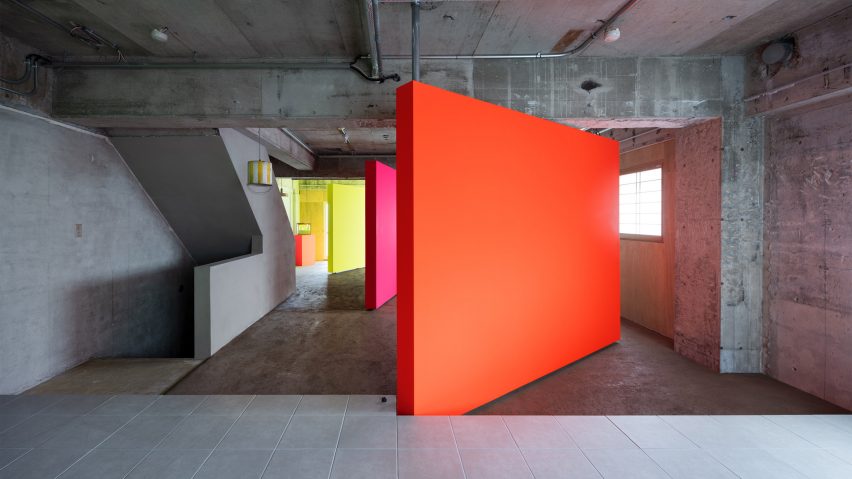
Rotating fluorescent panels define zones in "co-being space" by Ab Rogers Design
Ab Rogers Design has completed an artist's studio and residence in Kanazawa, Japan, featuring a series of fluorescent partition walls that can be rotated to transform how the space is used.
Called Fishmarket, the multipurpose creative and living space was designed for Japanese artist Hiraki Sawa, who lives in London but regularly visits his home city of Kanazawa.
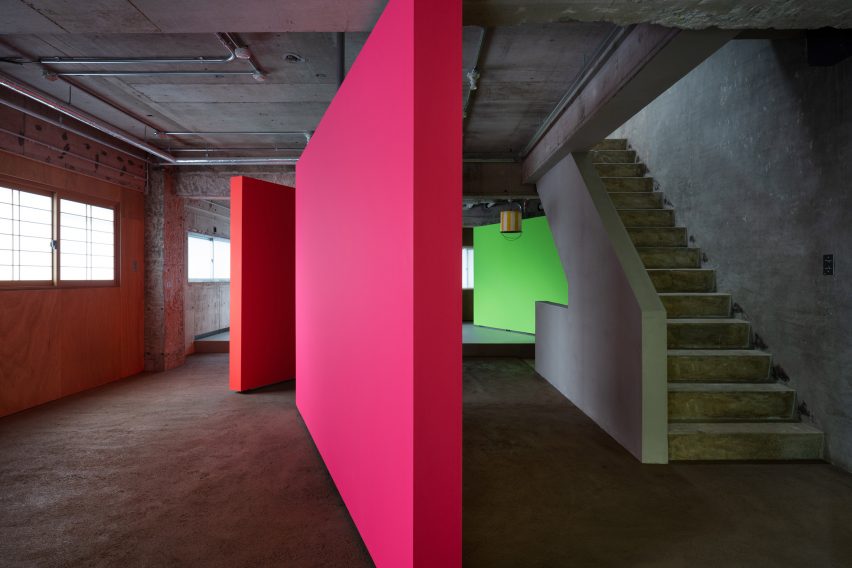
Sawa met Ab Rogers in 2019 when the pair were both working on projects for the Wonderfruit music festival in Thailand.
At the time, they were both living in east London and over the course of several conversations decided to work together on what Rogers calls the "co-being space" in Kanazawa.
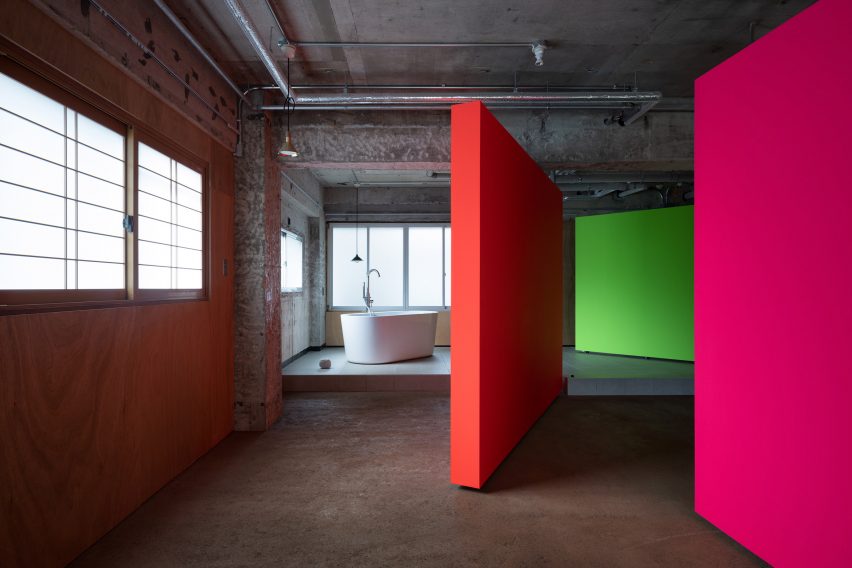
Named after the duo's shared love of fish, the former commercial space was converted into a place for Sawa to stay while in Kanazawa, as well as a place to host workshops around design, culture and food.
Rogers' studio stripped the interior back to its industrial shell before adding foil-backed insulation to some of the walls and introducing interventions including the rotating plywood walls.
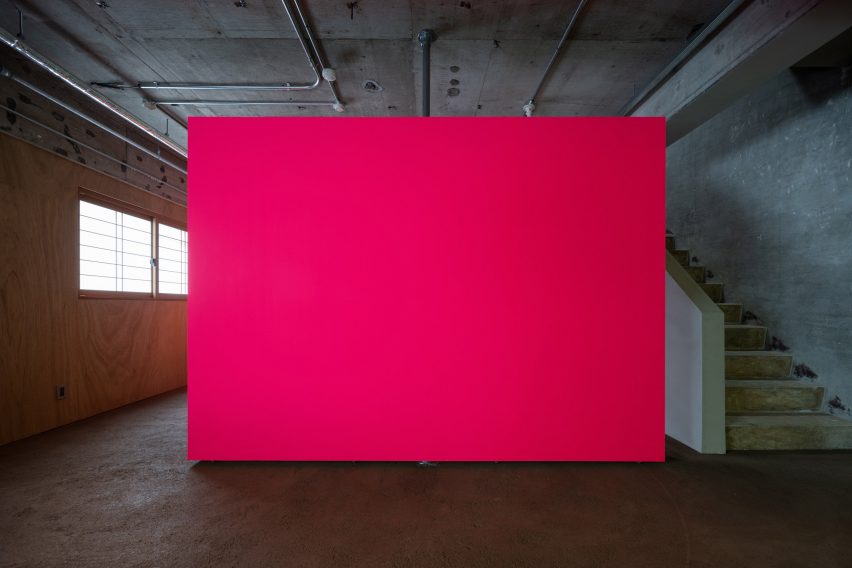
"We didn't want to make it cosy or glossy, we wanted to work with the bones of what was there," Rogers told Dezeen.
"We tried to let the light in as much as possible while keeping it raw and creating these interventions, these objects in space."
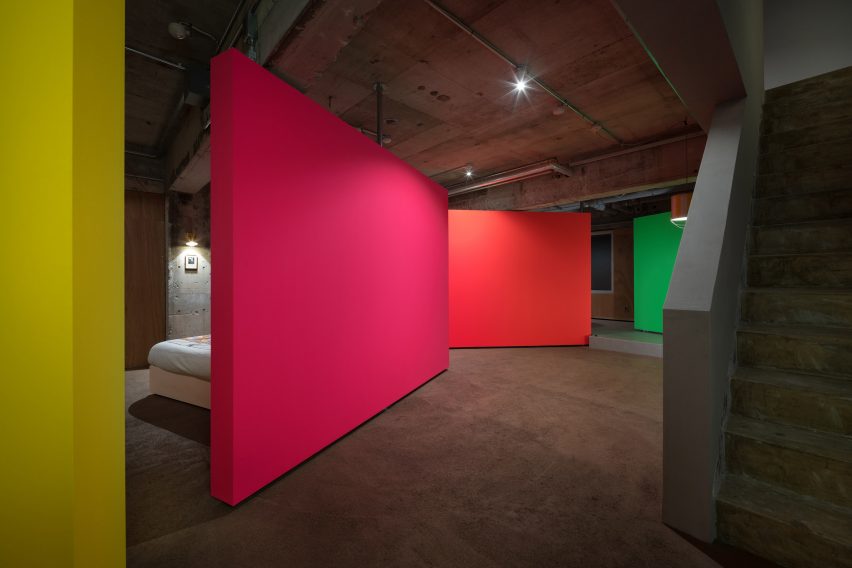
The insertion of the four movable partitions on the building's second floor allows this open space to be transformed into three smaller multipurpose zones.
Pivoting doors conceal the bathroom and enable the bedroom to become a workshop for making art, a place for viewing it or a social space for gatherings.
Each panel is painted in a different fluorescent highlighter hue to bring a sense of vibrancy and character to the otherwise pared-back space.
"I love fluorescent colours because they're really alive and dynamic," Rogers explained. "When daylight hits them they become electrified and they transform into something else."
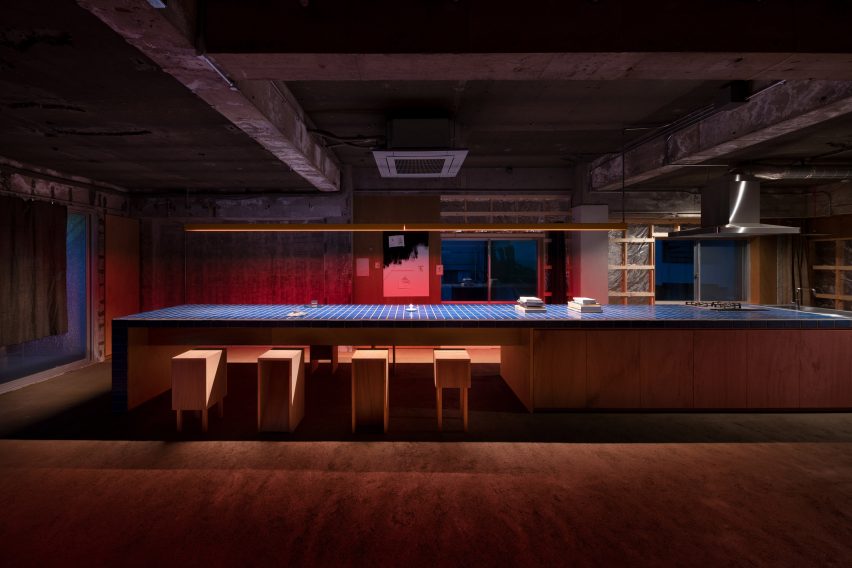
A concrete staircase ascends to another open space where a monolithic nine-metre-long workbench functions as a kitchen, a worktop and a table for cooking, eating and sharing.
"The kitchen can be used as a kitchen but it's also adaptable depending on what actions are being performed in the space," Rogers explained.
"If you put a plate on it, it becomes a restaurant," he added. "If you put a computer on it then it's an office and if you put a sewing machine on it then it becomes a workshop for designing or making textiles."
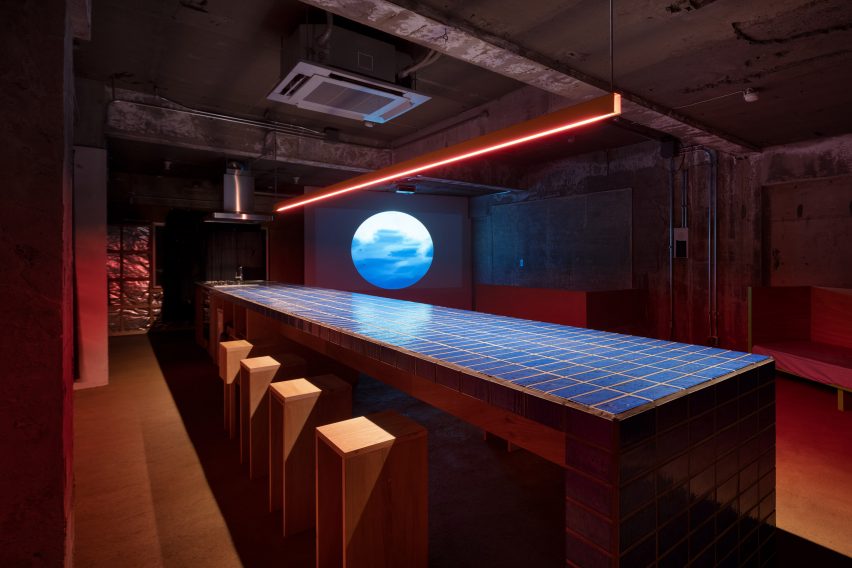
All of the materials used in the project were sourced locally and chosen for their affordability. Building regulations also dictated some of the design decisions, such as the need to line certain walls with plywood panels.
Rogers never visited Kanazawa, so Sawa was responsible for solving problems on-site and finding materials to turn his ideas into reality.
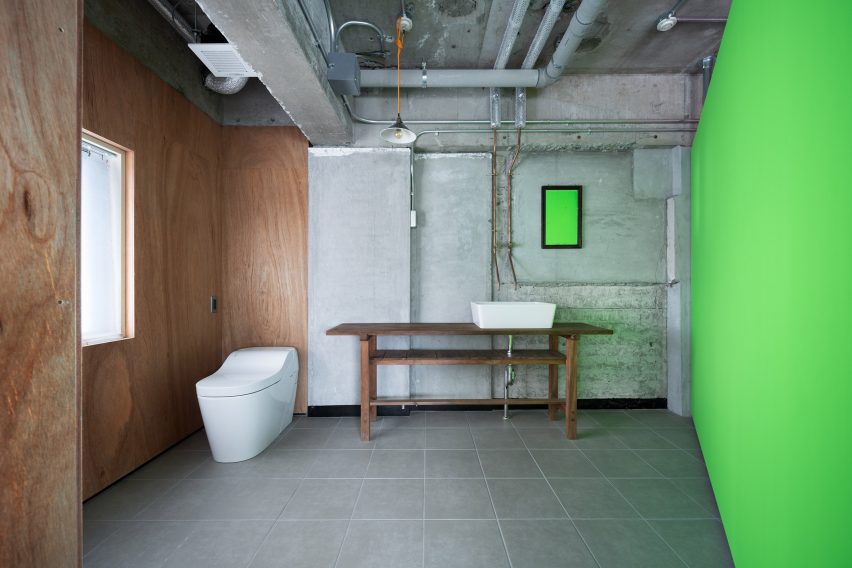
The project evolved over time with lots of back and forth between the client and designer. According to Rogers, this organic process produced an outcome that embodies both of their visions.
"I love these small projects where you have a strong affiliation with the client," said the designer. "This symbiotic way of designing through a conversation is really fluent and means you're always building ambition."
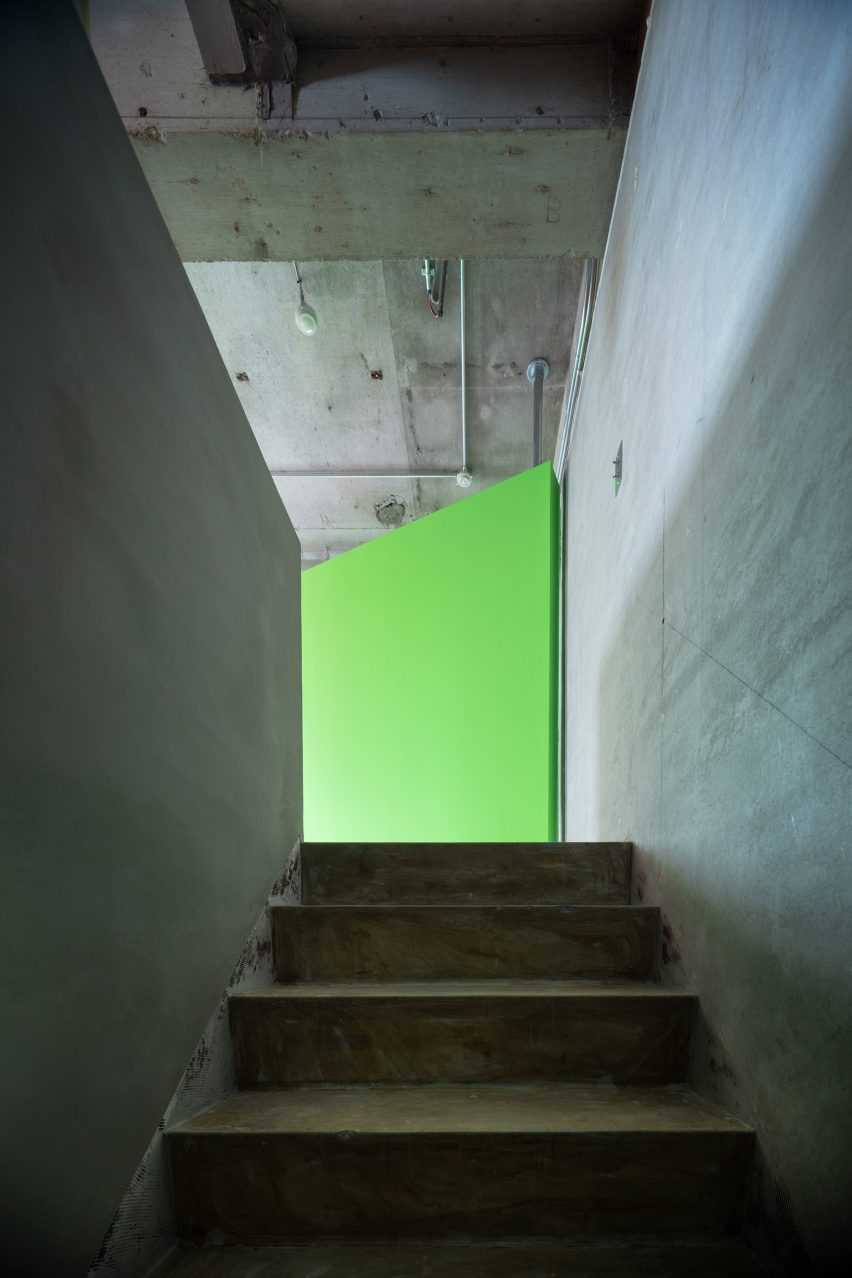
Rogers works across fields such as health, culture, retail, hospitality and housing.
Previous projects by the multidisciplinary design studio include a cancer treatment hospital clad in glazed red terracotta and a space-efficient apartment with a floor area of just 19 square metres.
The photography is by Takumi Ota.